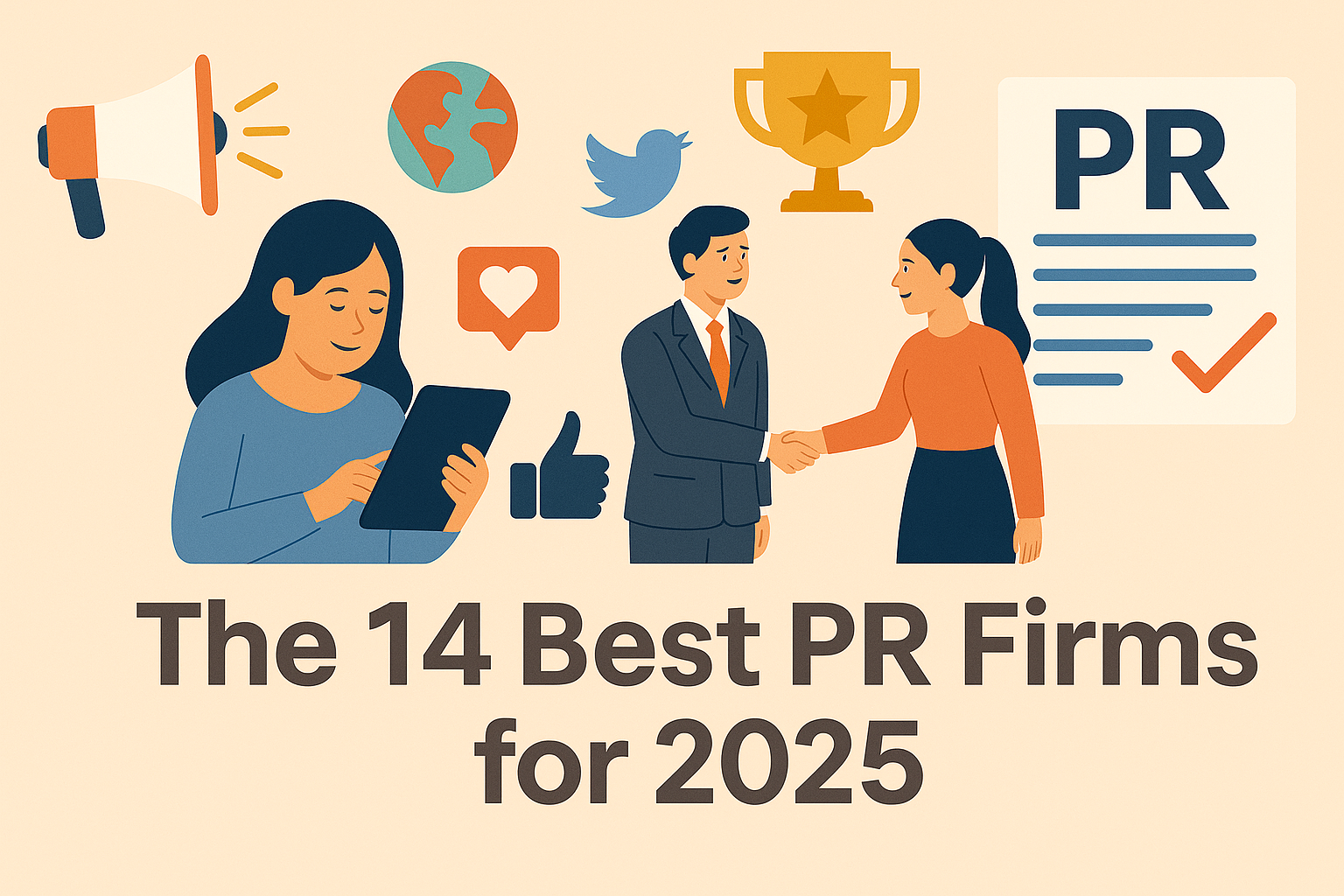Building a successful B2B PR strategy in 2024 requires much more than blindly pitching your brand to reporters in hopes of garnering news attention. For companies to succeed and achieve their marketing goals, they need an all-encompassing strategy built on research, completed with expert execution, and followed up by targeted analysis.
What Is B2B PR?
Business-to-business (B2B) B2B public relations (PR) encompasses strategically managing a company’s public image and reputation in the context of its interactions with other businesses. It involves the thoughtful crafting and execution of communication strategies to elevate the visibility and perception of a B2B enterprise among fellow businesses, influential industry figures, and relevant stakeholders.
B2B PR is essential for any company seeking to gain exposure in their industry or sector, and it plays a crucial role in building trust with partners. It typically involves strategies such as media relations, thought leadership campaigns, influencer engagement, and participation in industry events, as this style of public relations creates an environment for exchanges of goods, services, partnerships, and collaboration among companies in similar industries.
B2B PR vs. B2C PR
Distinct from B2C (business-to-consumer) PR, which concentrates on reaching and engaging individual consumers, public relations for businesses serving other businesses is about earning attention from decision-makers, professionals, and organizations within a business environment. The primary objective of B2B PR lies in fostering trust, credibility, and positive sentiments among pivotal stakeholders, ultimately fostering lucrative business prospects, partnerships, and industry influence.
Why Is B2B PR Valuable for Companies?
B2B PR is important for companies because it helps create a positive image and strengthens relationships with current and potential clients, customers, and partners. B2B PR builds trust and credibility, provides market insights, increases brand visibility, educates the public about the company’s offerings, enables companies to respond quickly to customer feedback, keeps decision-makers up-to-date with changes to the external environment and business trends, and can even help prevent costly legal issues. A good B2B PR campaign can also help build relationships with investors by informing them of newsworthy milestones or developments.
There are eight essential components of a successful B2B PR strategy. Ultimately, you should look for these in any PR agency you plan to work with. Without these elements, PR strategies may fall short, providing short-term results instead of long-lasting effects.
What Does a B2B PR Strategy Do?
As mentioned above, a robust B2B PR strategy promotes a company’s products or services to other businesses. The goal is to establish the company as a thought leader in its industry, generate positive media coverage, and drive sales. A B2B PR strategy may include writing and distributing press releases, pitching story ideas to journalists, organizing events and speaking engagements, and building relationships with industry influencers. Industry media and trade publications typically target decision-makers in other businesses with the strategy.
12 Tips for Building an Effective B2B PR Campaign
1. Agility and Flexibility
Years ago, planning and adhering to a precise schedule was crucial to the successful management of a B2B PR campaign. PR professionals will send a press release on X date, release their product on Y date, and then send follow-ups to journalists afterward.
However, that kind of structured approach isn’t always feasible or desirable in 2024.
Instead, brands need to be agile and flexible, ready to change dates, update strategies, and respond to the swift news cycle as needed.
In practice, this may mean adopting more of an ongoing, strategic PR approach over a strictly campaign-based approach. For example, a solid strategy could include adding several different windows of pitching time rather than sticking to a specific schedule.
By staying flexible, your brand will be better prepared to respond to opportunities as they arise, whatever they may be.
2. Define Your Goals
It’s essential to clearly define your business goals before launching a B2B PR campaign. This step helps you set the scope and direction of your efforts. Defining specific, achievable objectives that are realistic and measurable gives you clarity on the type of content you should create. This also ensures your message reaches relevant audiences. Knowing what results you want to achieve will enable you to measure success, track progress, and modify the plan when necessary.
3. Accurate Buyer Personas
B2B buyers are much more involved than your average consumer. This audience frequently requires complex technologies or solutions. B2B buyers also tend to have bigger budgets to work with. That’s why it’s important to develop accurate buyer personas. Buyer personas allow organizations to better understand their target audiences. In turn, that helps them develop a PR program that appeals to the right buyers and those buyers’ needs, pain points, and pursuits.
4. Develop a Press Kit
Create a press kit that includes company background information, key messaging, and visual assets like photos and logos. When building your press kit, remember that journalists will use this document to learn more about your brand. Include company background information you feel is important for your B2B brand and share messaging you believe accurately tells your brand’s story.
5. Precise Messaging
Tailor your messaging to highlight the most compelling product or service advantages and differentiators relevant to each target market. Consider your buyer personas and the specific challenges each audience faces. Use that information to create content and PR campaigns that will have maximum impact. Are your key messages as crisp as possible? Do they adequately differentiate you from your competitors? Dig deep to discover the wording, tone, and imagery that best resonates with who you are. Use it to grow your share of voice and truly connect with your audience. The end result? Your brand story is one people love to share—and that leads to more opportunities for you.
6. Competitive Landscape Analysis
Take the time to truly understand the strengths and weaknesses of your competitors within the greater landscape. Assess their media, target audiences, and campaigns to better guide and differentiate your own B2B PR campaign. In many cases, the successes of others can be reverse-engineered to benefit you!
7. Compelling Thought Leadership
Your team is your most valuable asset. Your leadership, sales team, and even your most technical folks are often well-versed in market trends, pain points, and company differentiators. These in-house subject-matter experts can provide great ideas for media pitches, interviews, and compelling content such as white papers, blog posts, and infographics. They don’t even have to be excellent communicators. They provide the steak, and PR professionals provide the sizzle.
Where’s the best place to start establishing thought leadership? Blogging. Your B2B company needs a blog to amplify your industry authority, and it’ll be successful if you focus on sharing original content that provides educational information to your audience. You can repurpose this content and pitch it to secure new opportunities. For example, your content might earn you an invitation to share thought leadership articles on sites hosted by other relevant industry professionals.
Backlinko analyzed the content marketing strategies of over 500 B2B companies. They discovered that B2B blogs that create educational content receive 52% more organic traffic than those that mainly publish content about their company. That, friends, is what thought leadership can do for your company. The collaboration between the industry experts within your brand and a strategic PR firm makes your content go further.
8. Turn Data Into Dollars
A strong and steady flow of newsworthy company announcements is great, but most companies have to create their own news to inspire consistent coverage. One way to achieve this is by leveraging your own data and studies. Data and stats from reputable sources such as CB Insights, Forrester, or Gartner add credibility to media pitches and news stories.
At Zen Media, we take creating our own news to the next level. We don’t just rely on external sources; we also leverage our internal expertise and resources. For example, we research and develop original research reports. These reports generate media coverage, attract leads, and fuel successful B2B PR campaigns.
9. Visualize Your Goals
Use visuals like infographics and videos to enhance your messaging. Graphic elements like these can become powerful tools in any B2B PR campaign. They can effectively convey complex information, making it more engaging and digestible. And keep in mind: graphics make your messaging more shareable!
Infographics, for example, can be used to present data and statistics in a clear and visually appealing way. They can also be easily shared on social media platforms, increasing the reach of your campaign.
Videos can also be a great addition to your B2B PR campaign. These provide a more personal touch and create a powerful platform for a brand to showcase its products or services. Videos can show a product in action, demonstrate its features, or even share customer testimonials. Post videos on your website, social media channels, YouTube channel, and other active platforms.
Infographics and videos are both excellent tools used to generate media coverage, increase engagement on social media, and increase traffic to your website. You can also include them in press releases and other communications. This strategy makes your messaging more compelling and increases its chances of being shared.
10. Amplify Your PR
You don’t need to launch a full-scale social media campaign to amplify your PR. Ensure you maximize every piece of coverage by promoting it on social media and via landing pages, email, mobile apps, and at events and trade shows. Every piece of content can and should be used as many times as possible. This approach solidifies brand messaging and gets your message out to a wider audience. Plus, by consistently publishing and sharing content, you’ll drive traffic to your website.
Amplifying existing PR as part of your B2B marketing strategy can mean multiple things, like sharing your content on social media or even having your company’s leadership team share that information across their personal social accounts. Say it in as many different ways as it can possibly be said. Don’t let the valuable information and content you’ve created go to waste.
11. Track Results
What gets measured gets managed. Here at Zen Media, we measure both quantitatively and qualitatively to see what’s working and where to double down to get the most bang for your buck. B2B PR campaigns are only as successful as the numbers say they are, so make sure you’re tracking those metrics.
Different metrics correspond to various goals, so avoid getting caught up in metrics that aren’t relevant to your brand. Work with your firm to create a public relations strategy that maximizes the ROI, even if it means working in an unconventional way (like working with micro-influencers versus influencers with more significant followings). Tracking the results of your PR campaign will show you a detailed picture of what your target market is looking for, what they want to see, and what they could do without.
Track results daily, weekly, monthly, quarterly, and yearly. Don’t let this info go by the wayside. And make sure the results factor into each new installment of your campaign strategy.
12. Be Willing To Adapt
If you want to stay competitive, maintaining agility and adaptability in your B2B PR campaign is essential. You can do this by regularly monitoring industry trends and making adjustments as necessary. It’s crucial to be prepared to respond to changing circumstances. By staying informed about the latest developments and trends, you can remain ahead of the competition. Want to work with a PR agency that does all of the above? Well, you’ve come to the right place.





